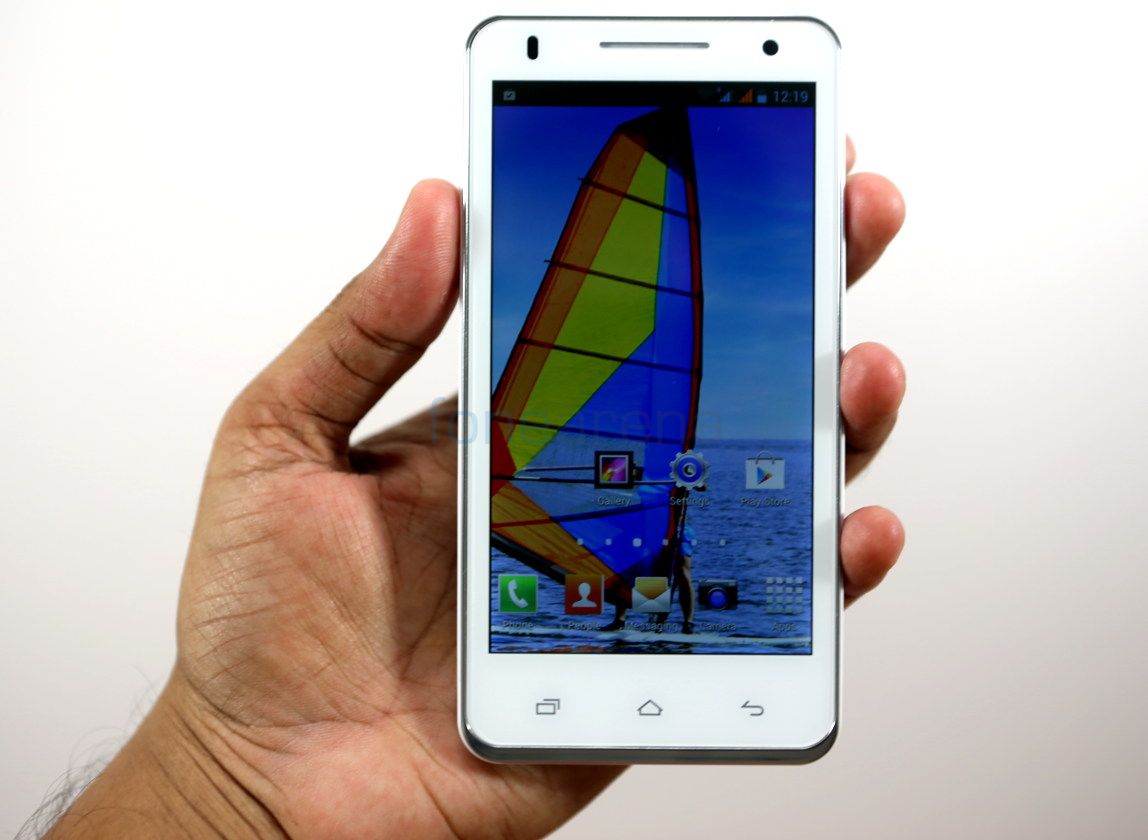
Xolo had already launched a lot of devices in the Q CORE series, but only the X1000 and the T1000 have a 4.7-inch HD display. The Q900 is the first device in the series with a 4.7-inch 720p display in the series. As usual this features a MT6589 quad-core chip. Is the device worth the price ? Let’s find out in the review.
Unboxing
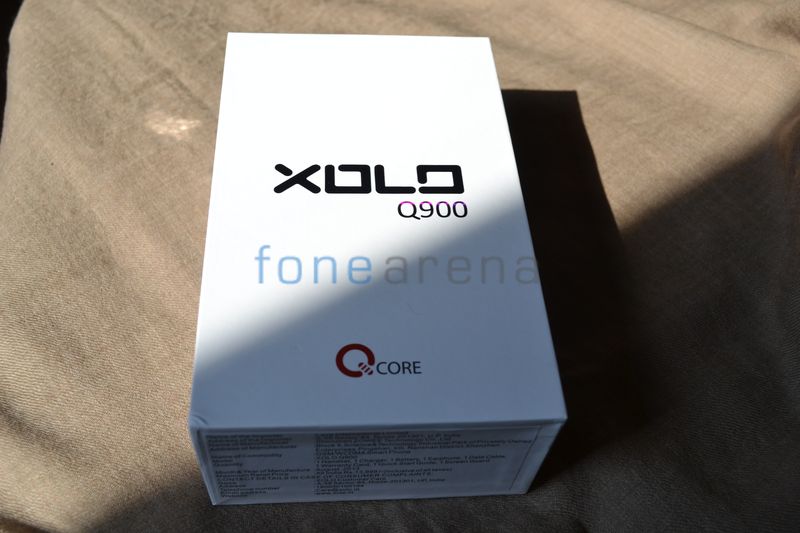
We unboxing the smartphone recently. Check out the unboxing video
httpv://www.youtube.com/watch?v=fs-s3haWs8U#t=0
Box Contents
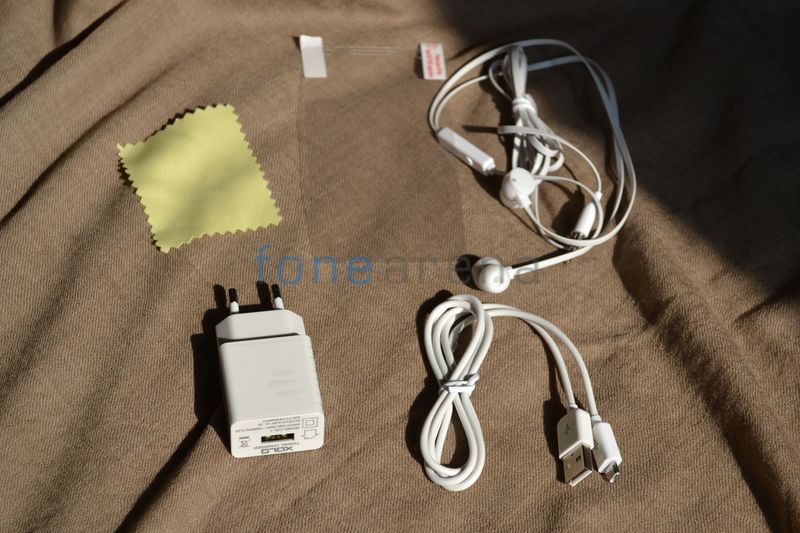
The box contents include
- Xolo Q900 smartphones
- 1800 mAh battery
- 2-pin charger
- micro USB cable
- in-ear headset
- Screen guard
- Cleaning cloth
- Quick start guide
- Safety, Warranty and Legal guide
Video Review
httpv://www.youtube.com/watch?v=IiXIdqfSMnk
Hardware
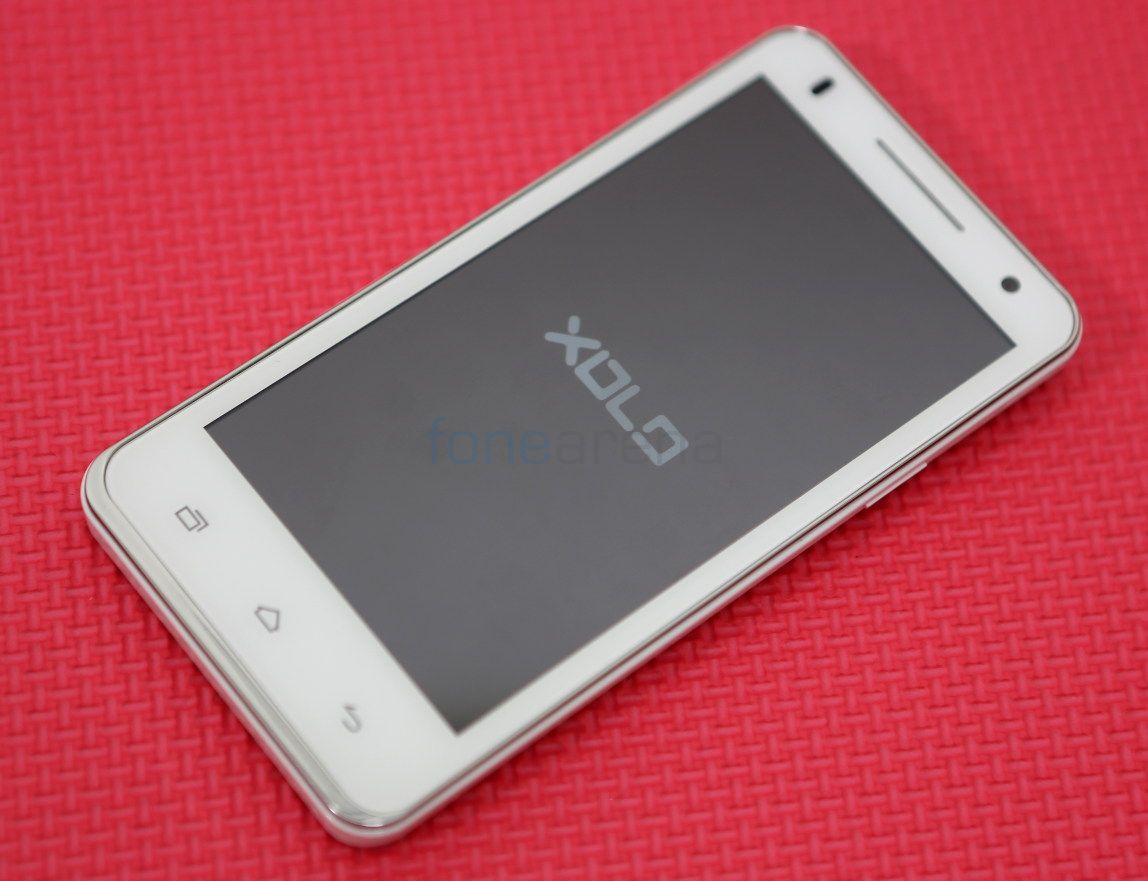
The phone has a 4.7-inch display at a resolution of 1280 by 720 pixels at 312 ppi. This one is a standard TFT display and is not based on one-glass solution (OGS) technology like the Play T1000 and the X1000, so the colors are not as vibrant as those devices, but the display is bright and the viewing angles are good. The display is too glossy and the sunlight legibility is average. Since the display is glossy, it is prone to fingerprints. On thing we noticed is that the colors and over saturated the display is too bright. You also get a screen guard in the box which you can use to avoid smudges on the screen.
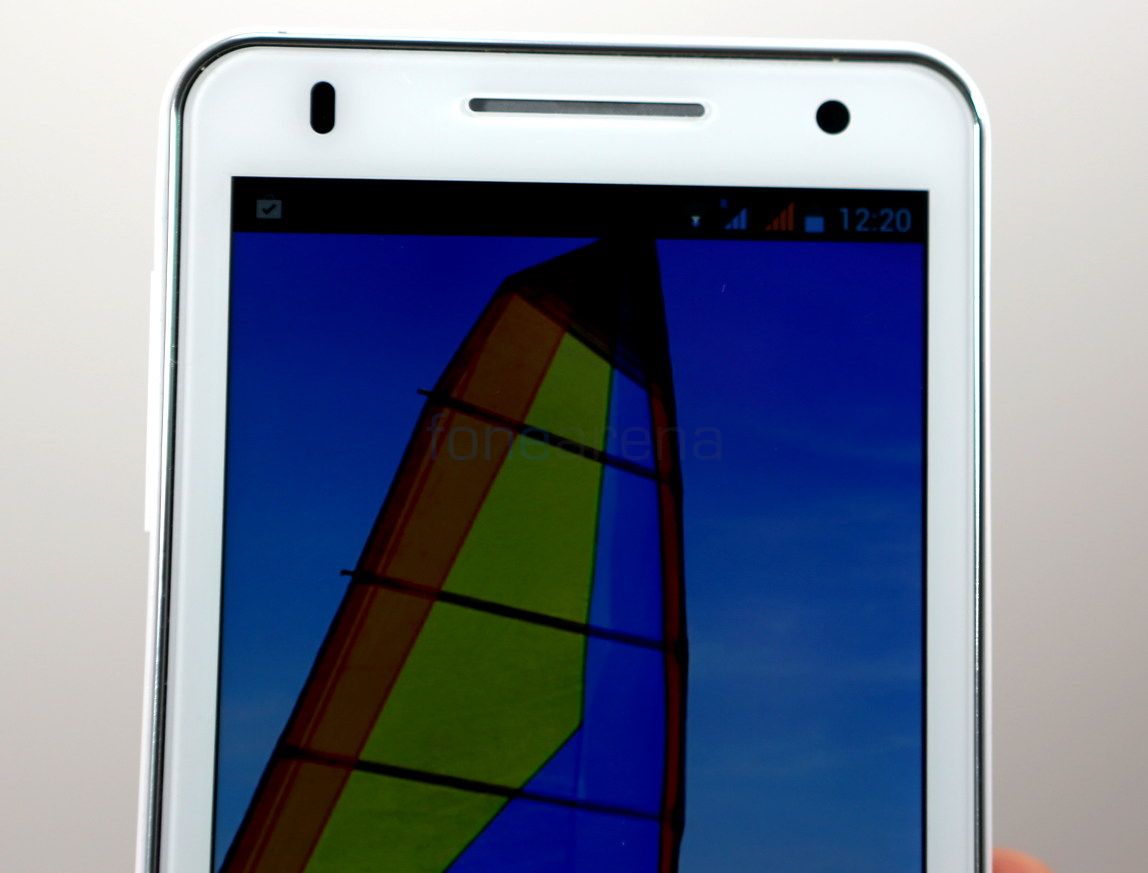
There is an ear piece on top along with a 2-megapixel font-facing camera that support recording at VGA (640 x 480 pixels) resolution. There are the usual Proximity and Ambient light sensors next to the camera. The phone doesn’t have a LED notification light.
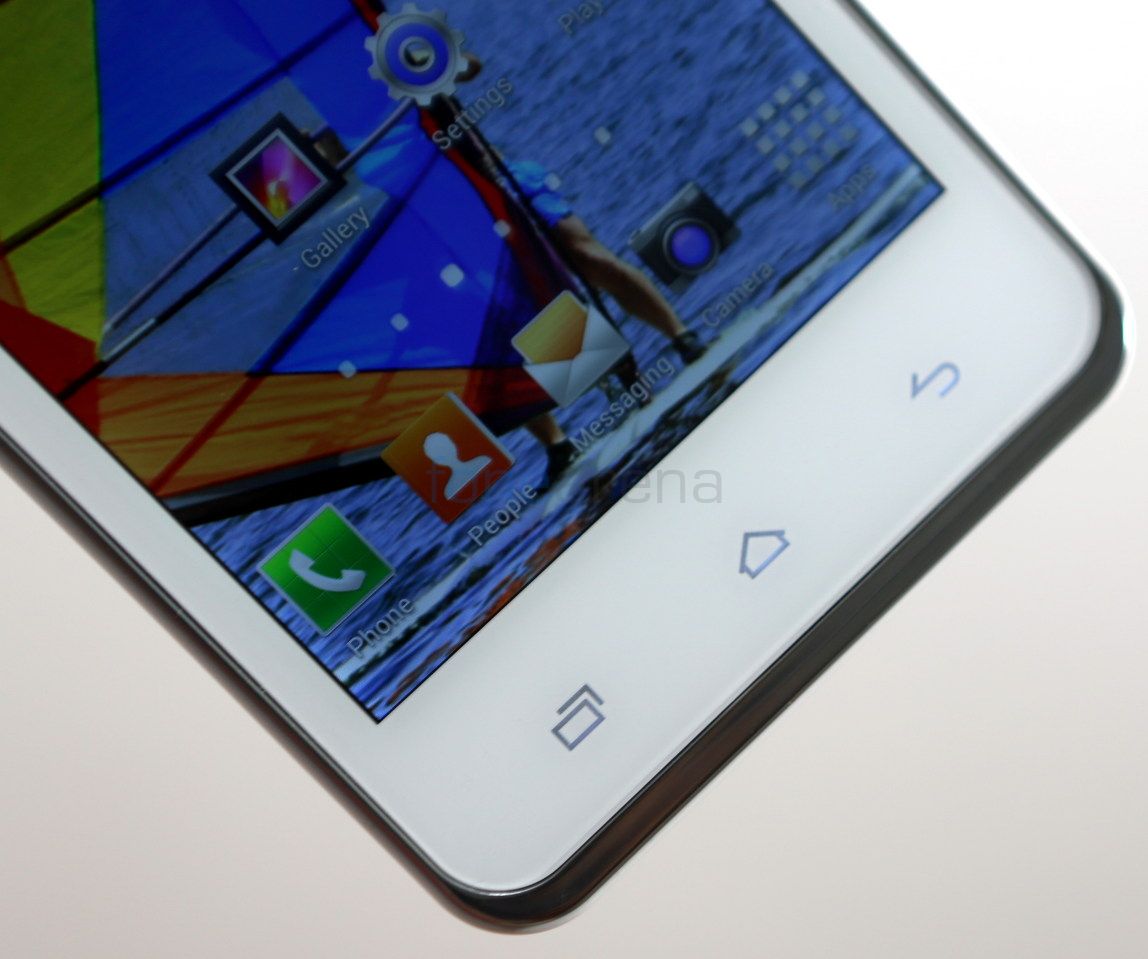
You have the usual set of capacitive touch button for menu, home and back, below the display. These are backlit and offer haptic feedback when pressed.

The phone is 9.9mm thick, and has solid build quality. The power button is present on the right side, which is easy to access with a single hand, since it is not huge.
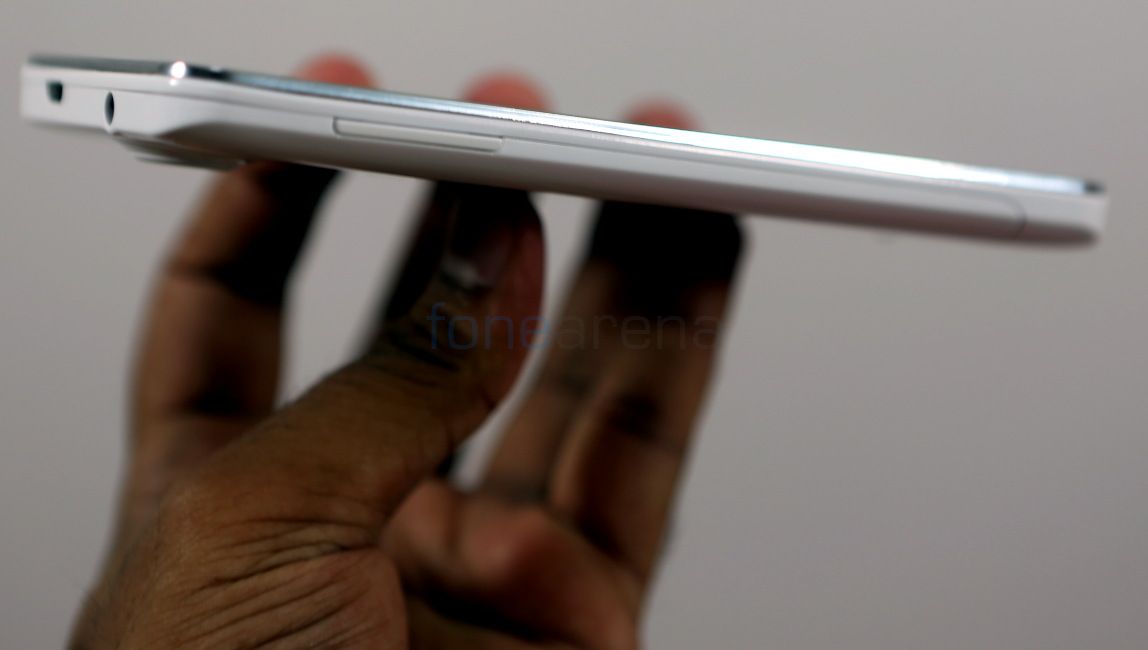
The volume rockers are present on the left side. The phone doesn’t have a dedicated camera key. A thin chrome rim runs on the sides of the phone.
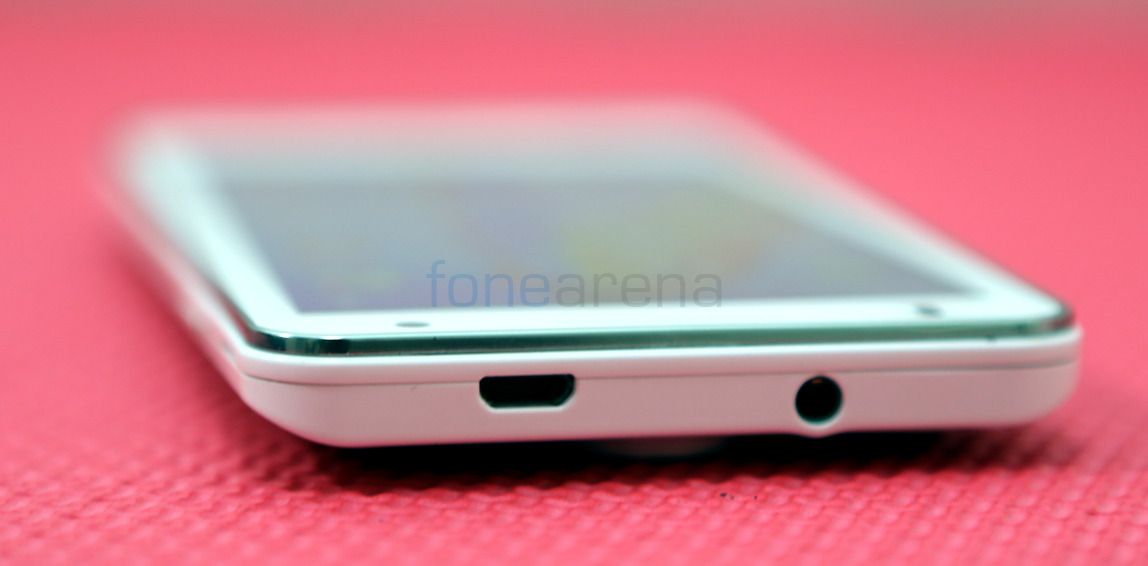
The micro USB slot and the 3.5mm audio jack are present on the top of the phone.
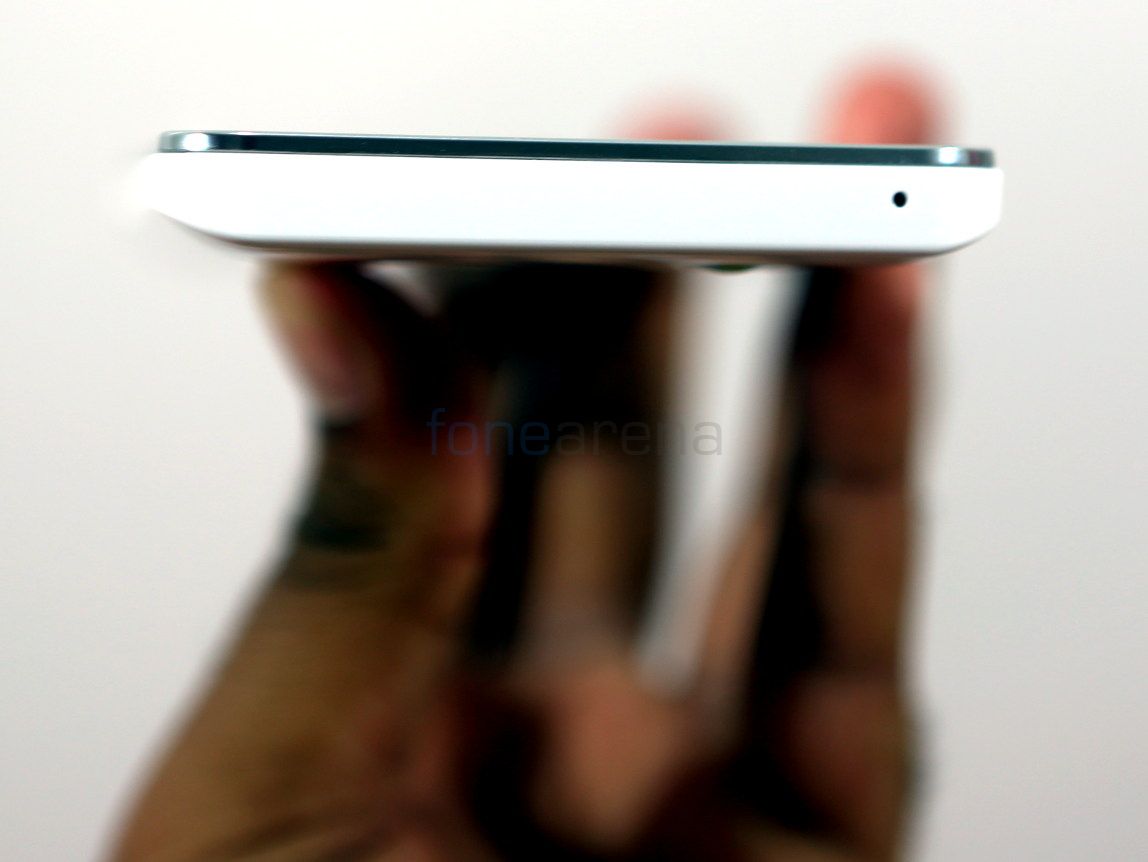
On the bottom, there is a tiny microphone hole.
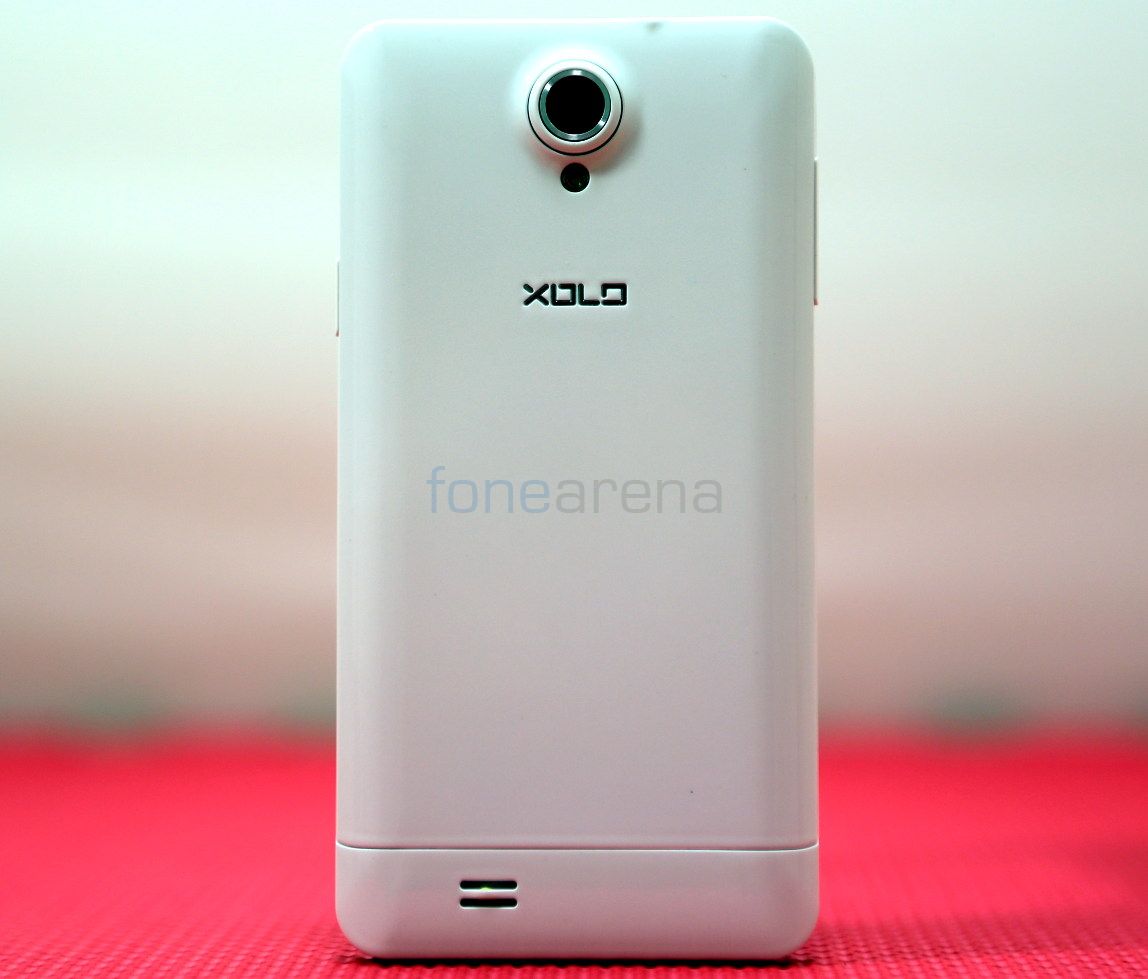
The back cover is shiny, hence it is prone to fingerprints.

On the back there is a 8-megapixel camera with BSI sensor, and LED flash. There is a Xolo logo below the camera module.
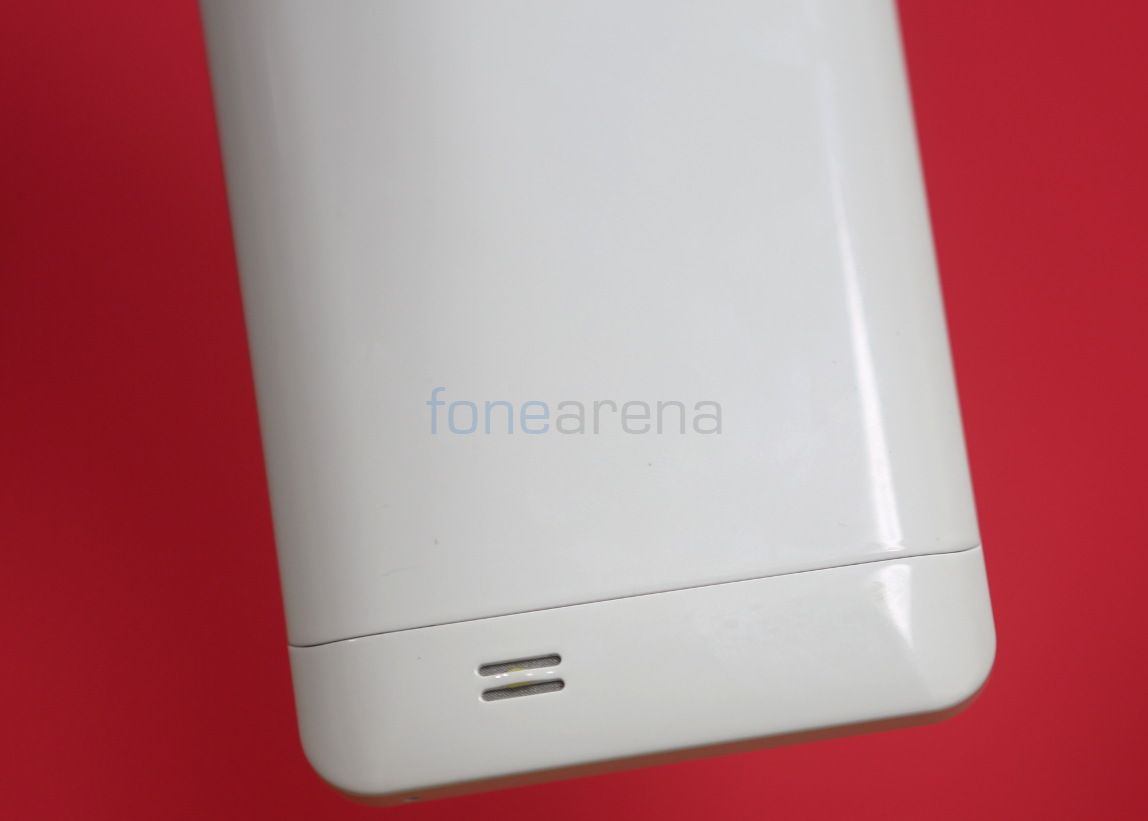
There is a tiny speaker grill on the bottom part of the back.
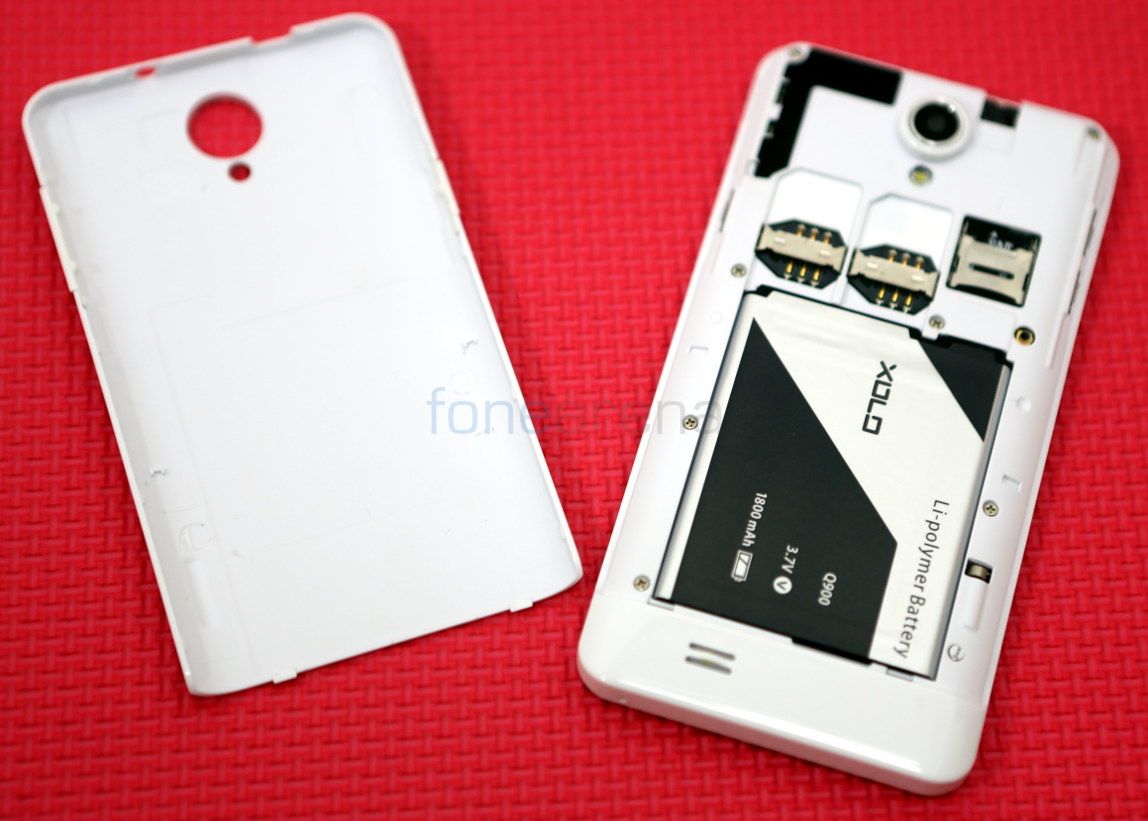
The back cover could be removed easily, which revealed the SIM and SD card slots and the 1800 mAh Lithium Polymer battery.
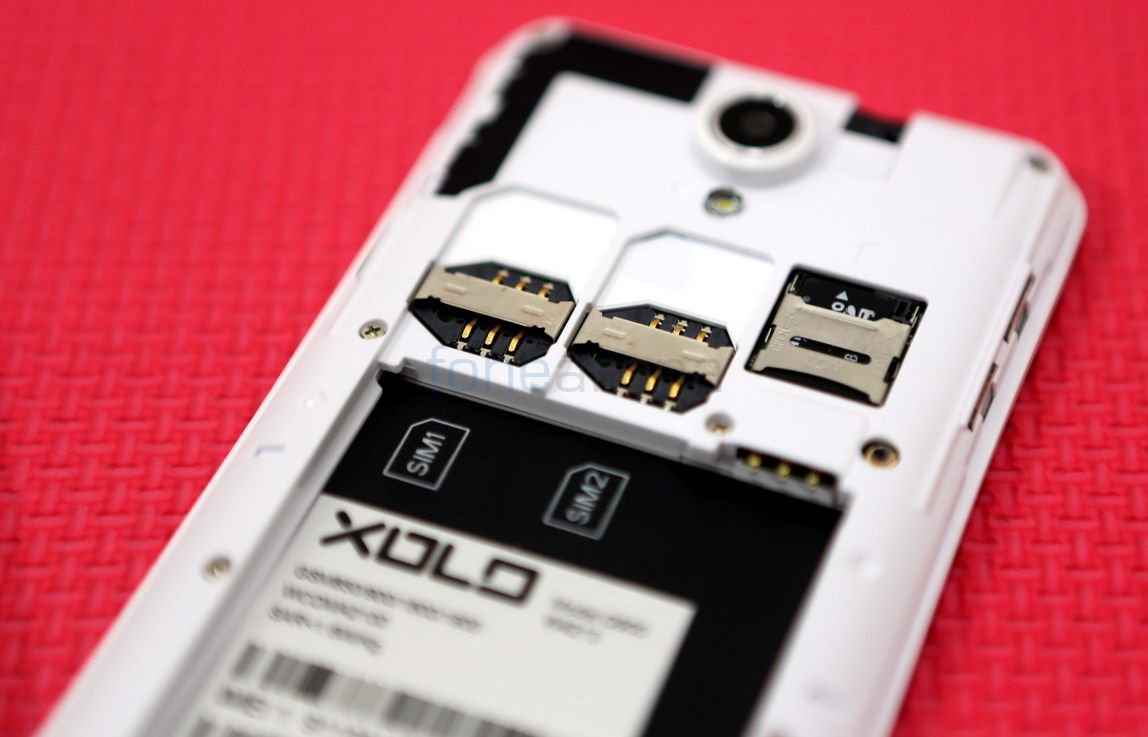
It uses a normal SIM card similar to other Xolo Q series smartphones. The SIM 1 and SIM 2 slots are present next to each other. There is a microSD card slot next to it that lets you expand the memory up to 32GB.
Camera
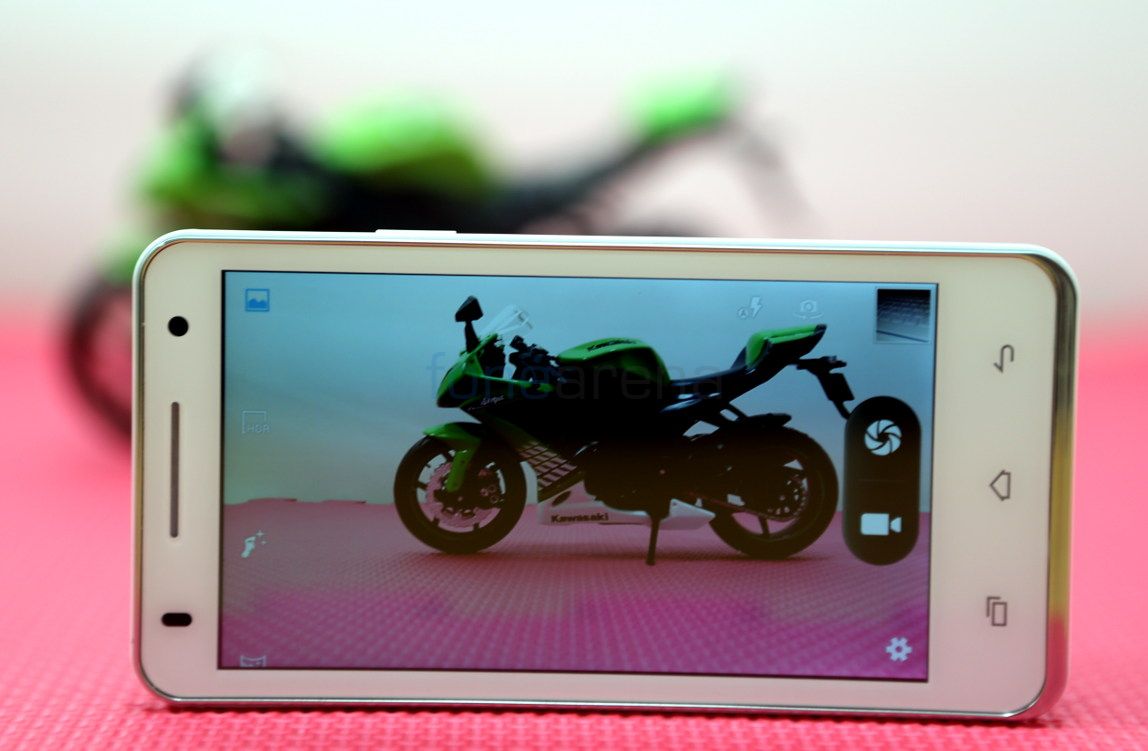
Looks like Xolo has used a camera sensor similar to the Q1000. The camera UI similar to other phones running on Android 4.2 with a navigation bar on the left pane that lets you access HDR, Panorama, Smile shutter and more. The settings menu lets you enable GPS location, adjust exposure, white balance, add color effects, change the scene mode and adjust anti-flicker mode. The image quality is good, including macro shots, but the low-light shots were just average.
Check out some camera samples
The phone can record videos at full HD 1080p resolution. Video quality is decent. Since the phone doesn’t have a secondary microphone the audio is not crisp. As usual, it comes with Electronic image stabilization (EIS) that uses software enhancements to minimize blurring and device shake.
Here is the 1080p Full HD video sample
httpv://www.youtube.com/watch?v=mDnVeqZTNCk
Software
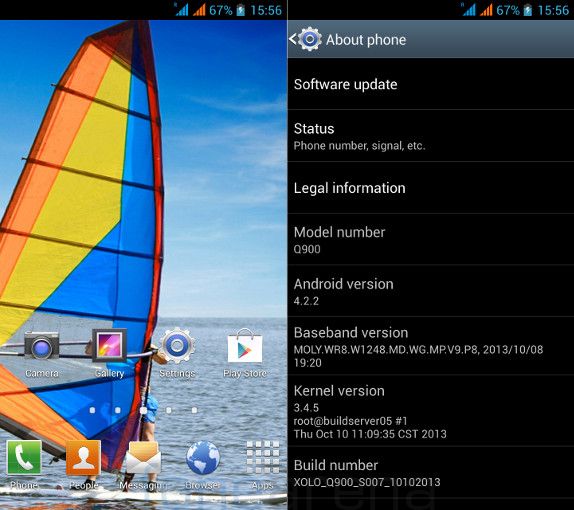
The phone runs on Android 4.2.2 (Jelly Bean), unlike most of the Xolo phones that runs on Android 4.2.1. You can add up to 7 home screens. It brings lockscreen widgets, Day dream, Quick Settings, Photo filters in the gallery and lots more new features that are not available in the Android 4.1. You can organize the app in folder in the home screen and in the bottom tray.
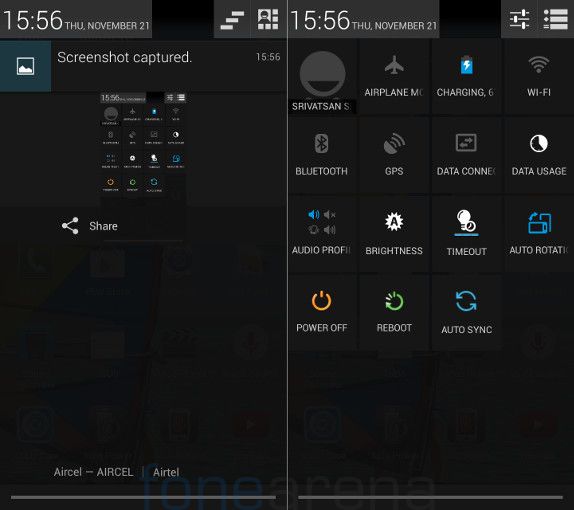
You get the notification screen when you swipe from the top with a single finger. This offers rich notifications that lets you perform several actions directly from the notification bar. You get the Quick Settings when you pull down from the top using 2 fingers. This lets you control Brightness, WiFi, Airplane mode and Bluetooth. In addition there are shortcuts for Data Connection, Data usage, Audio Profiles, Timeout and Auto rotation that are not available in stock android. You can hold some of these quick toggle buttons to get to the advanced settings. Since the PPI is more, some of the quick settings text get truncated.
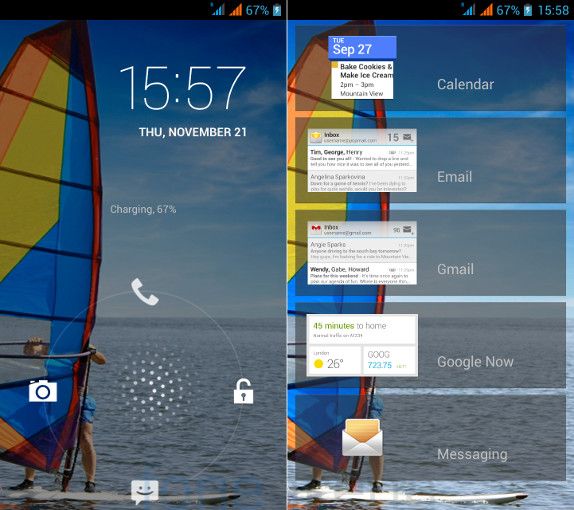
Unlike the other Xolo smartphones, the Q900 has lock screen like Android 4.1 that lets you launch the camera quickly from the lock screen by swiping to the left side. You can also swipe to the top to get to the dialer and swipe to the bottom to get to messaging. You can also launch the camera by swiping to the right and swipe to the left to add lockscreen widgets.
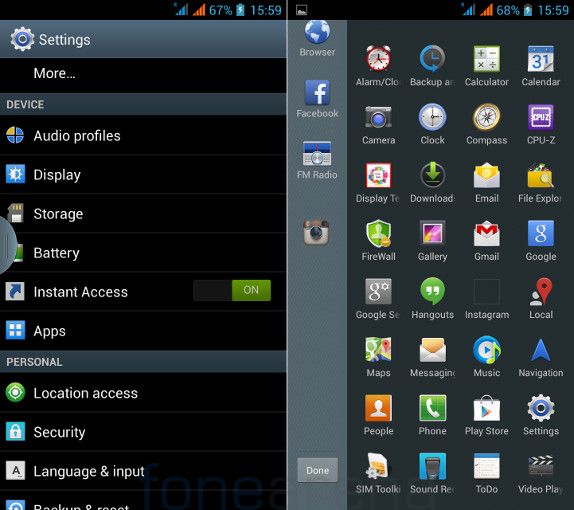
Xolo has added a new feature called Instant Access in the phone. This shows a hanging slider on the left that lets you add apps to the tray. Once you add the apps from to the tray, you can open them easily using the instant access bar. This is nothing like the multi-window present on the Samsung devices.

Out of 4GB of internal storage you get 1.80 GB of user storage. Out of 1GB of RAM, you get 965MB of usable RAM, out of which 722 MB of RAM is free when the phone is idle.

You can set if default write disk to SD Card, once you have inserted one. You can also move the apps to the SD card.
Apps
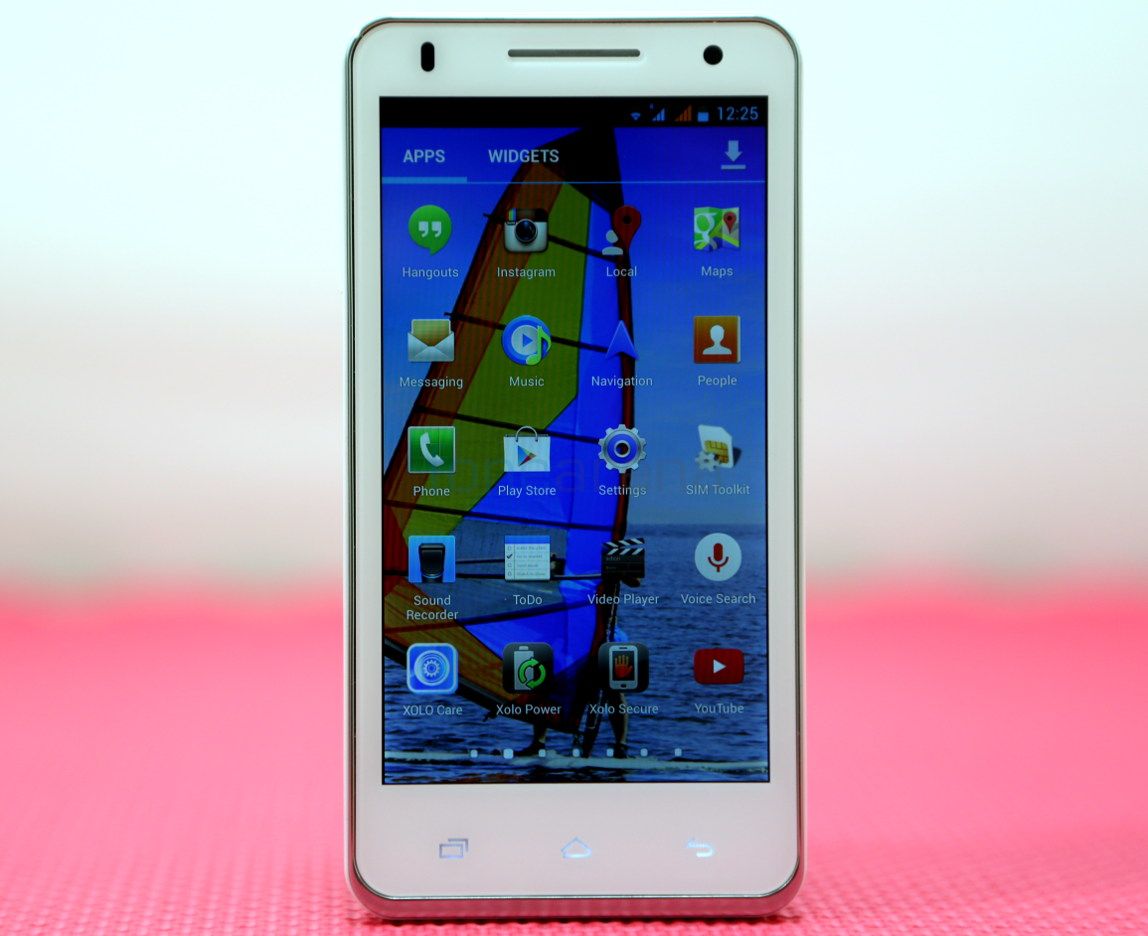
The phone comes with lot of pre-installed apps. The Utility apps include, Calculator, Clock, File Manager, Note Book Sound Recorder. It also has Google apps. You can also download more apps from the Play Store.
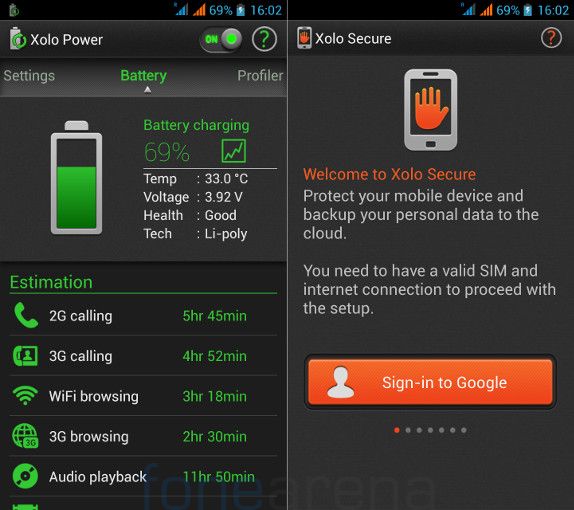
In addition to these apps Xolo offers their own apps, Xolo Power and Xolo Secure. The Xolo Secure app keeps the phone protected by locking and also lets you track it remotely. You can send commands from these numbers to wipe the data remotely, sound a Siren, Lock the phone and track it. It also backs up call-history and messages to the registered Gmail account.
The Xolo Power optimizes battery usage. This lets you set data sync frequency, night mode and low battery mode to conserve battery life.It also offers warnings if an app consumes more CPU so that you can kill them immediately. Both these apps are available for range of Xolo devices from the Play Store for free.
Music Player and FM Radio
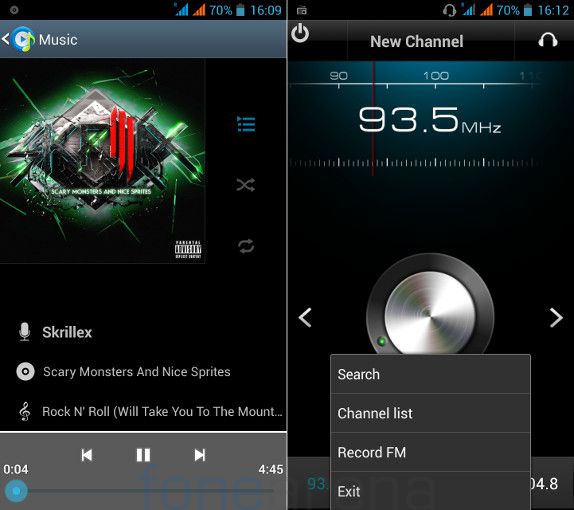
The Music Player is simple and play different formats, including MP3, MIDI, WAV, 3GPP,AAC,AAC+, AMR and more. You can enable equalizer from the settings and use Bass boost and 3D effect features when you are listening using earphones. The phone has FM Radio with auto tune and recording, but lacks RDS feature. The in-ear earphones are decent. The stock player supports 1080p HD full HD video playback.
Calls and Messaging
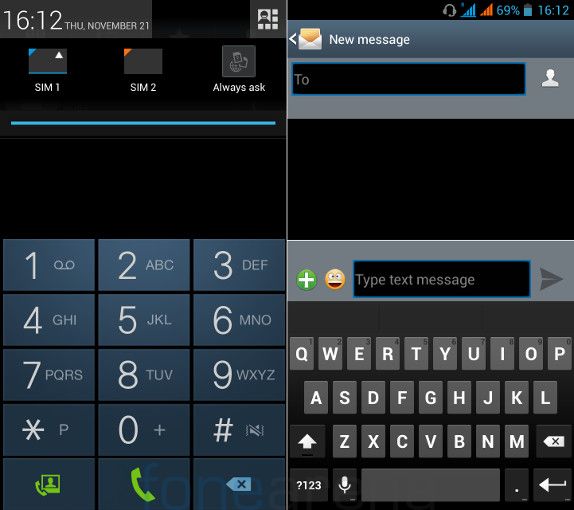
Since this is a dual SIM phone, you get options to switch to either SIM cards from the notification bar. The phone comes with a default keyboard.
Dual SIM and Connectivity
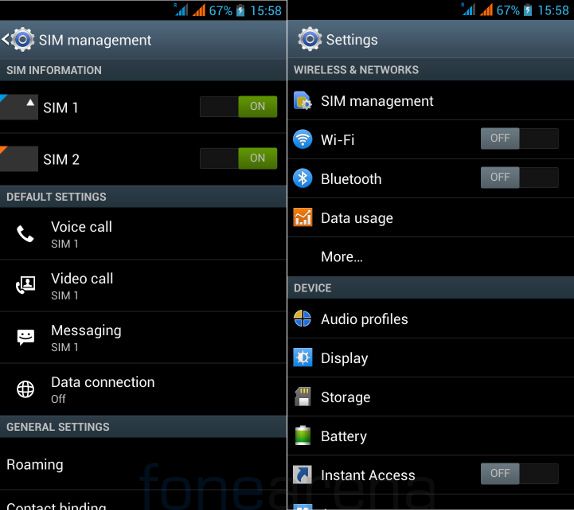
The Dual SIM manager is similar to other dual SIM Android smartphones in the market. You can set a default SIM for several operations including voice call, video call, Messaging and Data connection. You can also choose ‘Always ask’ option for voice calls and Messaging that gives you option to complete the operation after you choose either SIM cards. The connectivity features include, 3G (HSDPA up to 42.2 Mbps; HSUPA up to 11.5 Mbps), WiFi 802.11 b/g/n, Bluetooth 4.0 and GPS. It has support for wireless display that lets you share content from the phone to a HDTV by connecting a wireless display adapter to a HDMI-enabled TV. The phone doesn’t have USB on-the-go (OTG) support.
Performance and Benchmarks
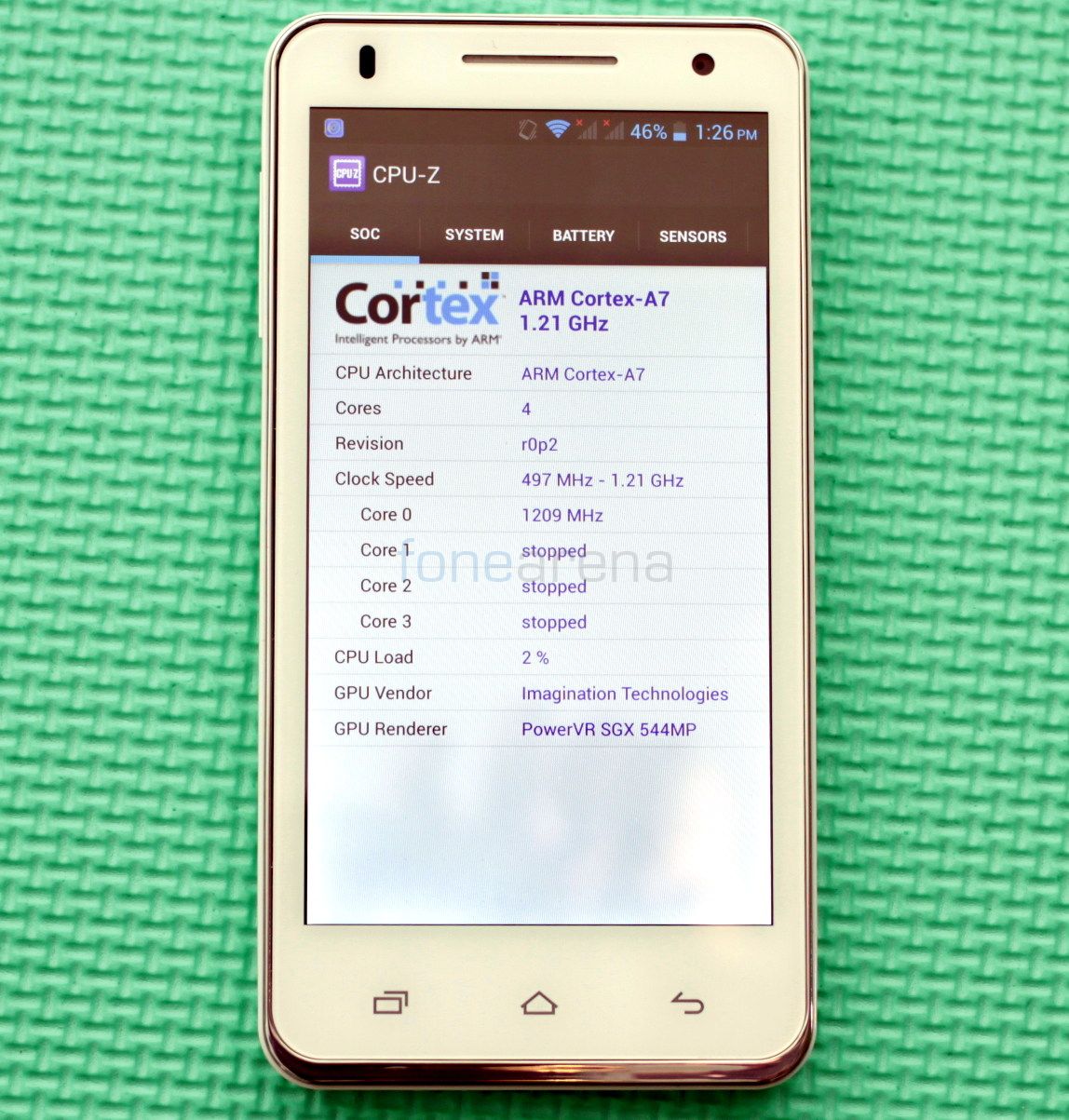
It is powered by a 1.2 GHz quad-core MediaTek MT6589 processor with 286 MHz PowerVR SGX 544 GPU. We did not face any lags on the smartphone when using apps. We also ran range of synthetic benchmark tests on the phone.
Quadrant Benchmark
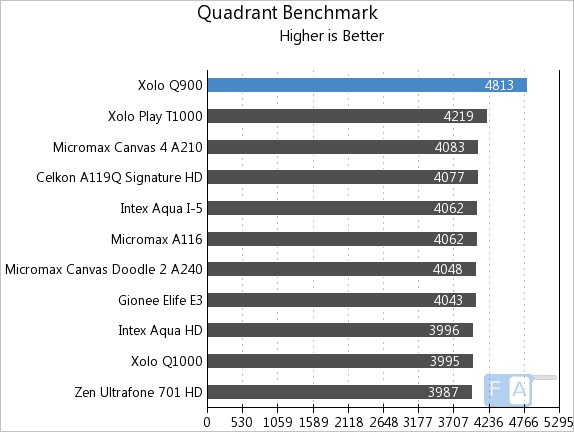
The Xolo Q900 tops the Quadrant benchmark.
AnTuTu Benchmark 3.3
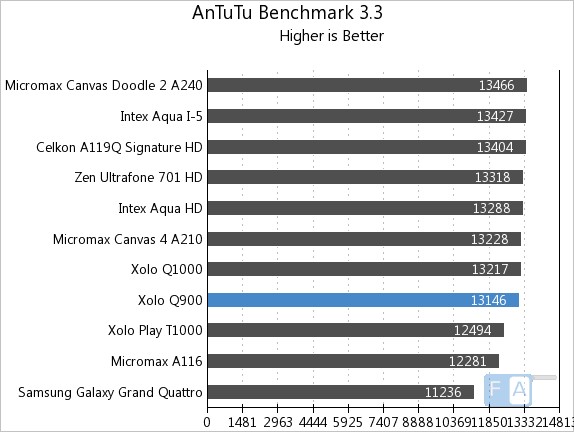
The Q900 managed to score 13146 points in the AnTuTu Benchmark 3.3.
Vellamo 2 HTML5
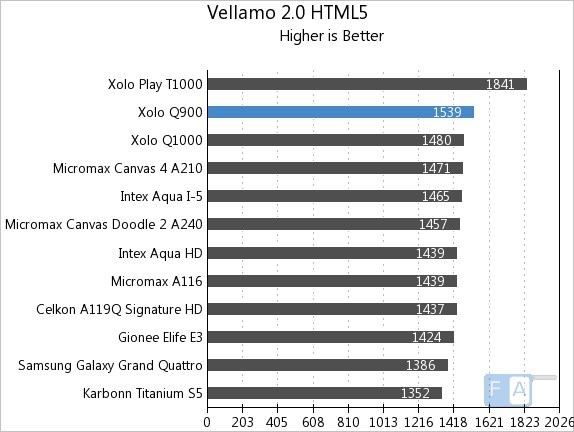
The Q900 clocked 1539 points in the Vellamo 2 HTML5 browser benchmark. Check out the complete set of Xolo Q900 Benchmarks here.
We tested a range of games including Asphalt 8, Modern Combat 4, Riptide GP2, N.O.V.A 3, Dead Trigger 2 and Shadow Gun. The gameplay and the graphics were decent. Check out the gaming review below.
httpv://www.youtube.com/watch?v=akNpaI7Cevk
Battery

The phone packs a 1800 mAh battery, which lasts less than a day with average use on 3G with both the SIM cards. You can use the bundled Xolo Power app that improves the battery life to make it last a whole day.
Conclusion
Overall, the Xolo Q900 is a decent mid-range smartphone at a price of Rs. 12,999. Wish the display was less glossy and less brighter. If you are looking for a smartphone with good build and a performance, but can compromise on display and battery, go for it.
Pros
- Good build
- Good performance
- Good Camera
Cons
- Average display
- Battery could be better






